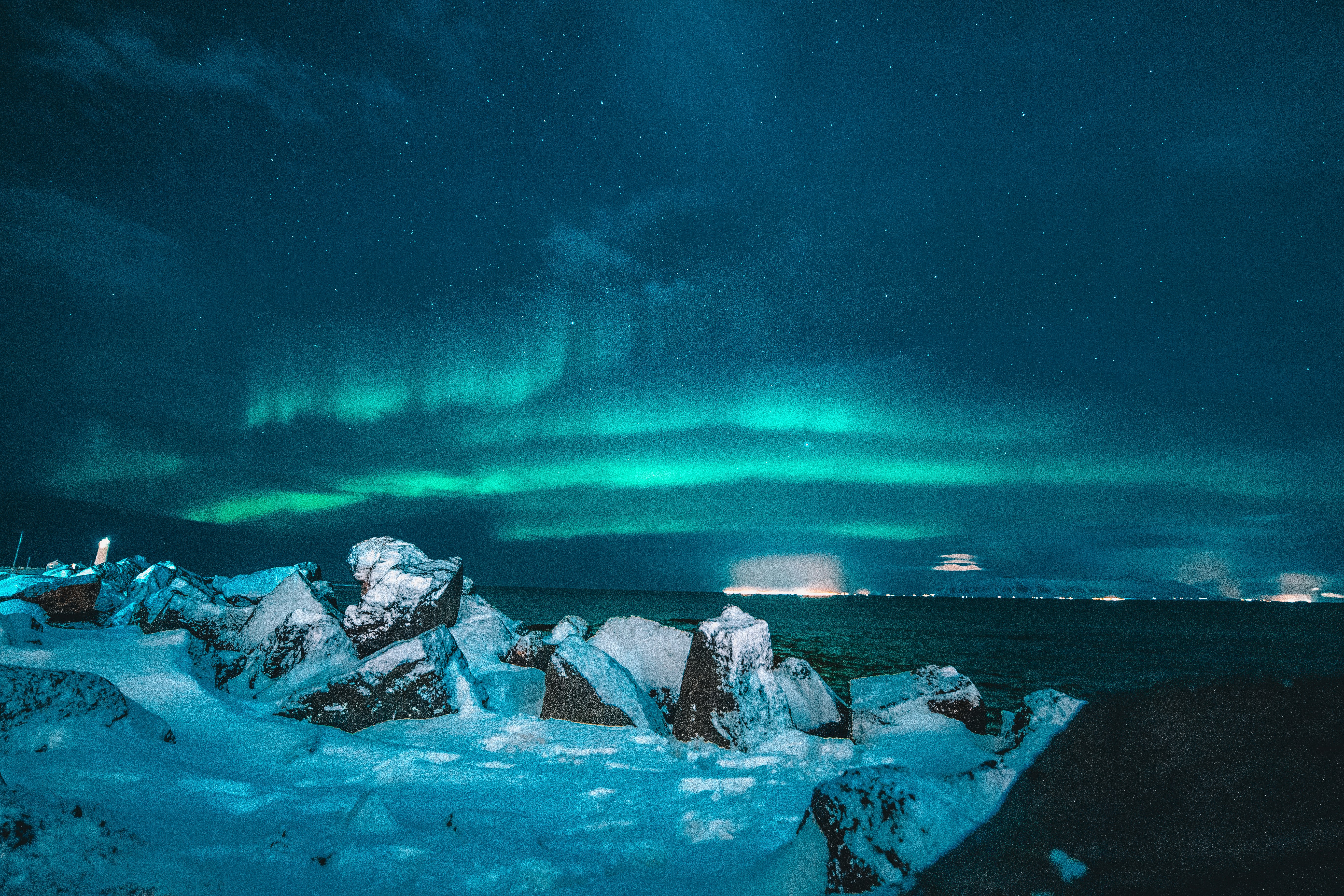
Iceland, a land sculpted by fire and ice, offers one of the world’s most spectacular natural phenomena: the Aurora Borealis, commonly known as the Northern Lights. This ethereal dance of light in the night sky is a bucket-list experience for many, drawing visitors from across the globe to its unique landscapes. Understanding the science behind this celestial ballet and knowing the optimal times and locations can significantly enhance your chances of witnessing this breathtaking spectacle.
The Northern Lights are a natural light display in Earth’s sky, predominantly seen in high-latitude regions around the Arctic and Antarctic. They are caused by disturbances in the magnetosphere caused by solar wind. These disturbances alter the trajectories of charged particles (electrons and protons) in the solar wind and magnetospheric plasma. As these particles collide with atoms and molecules in Earth’s upper atmosphere, typically at altitudes of 90-150 km, they excite the atoms, causing them to emit light. The color of the aurora depends on the type of gas atoms involved and the altitude at which they collide. Green, the most common color, is produced by oxygen atoms, while red indicates high-altitude oxygen. Nitrogen produces blue and purple hues.
Successfully spotting the Northern Lights depends on a combination of factors: time of year, time of night, clear skies, and solar activity.
The most crucial factor for seeing the Northern Lights in Iceland is darkness. This means the prime season runs from September to April. During these months, the nights are long and dark enough to allow the aurora to be visible.
Conversely, from mid-May to mid-August, the continuous daylight of the Icelandic summer makes it impossible to see the aurora, regardless of solar activity.
Once darkness falls, the aurora can appear at any time. However, the most common period for strong displays is between 9:00 PM and 2:00 AM. It’s advisable to be prepared to wait and watch for extended periods, as the lights often wax and wane.




While the Northern Lights can technically be seen from anywhere in Iceland with a dark sky, certain locations offer better conditions and more stunning backdrops for photography.
While Reykjavík itself suffers from light pollution, you don’t have to venture far to find darker skies. Many guided tours depart from the city, taking you to nearby areas renowned for their aurora viewing potential.
The South Coast offers some of Iceland’s most dramatic scenery, providing incredible foregrounds for aurora photography.
Known as “Iceland in Miniature,” the Snæfellsnes Peninsula offers diverse landscapes and numerous dark spots perfect for aurora hunting.
North Iceland, particularly around Lake Mývatn, is another fantastic region for aurora viewing, often less crowded than the south.
For the most adventurous and those seeking true solitude, the Westfjords offer unparalleled darkness and rugged beauty. However, accessibility can be challenging, especially in winter, with roads sometimes closed due to snow. This region is for dedicated aurora chasers who are prepared for remote conditions.
Stay Patient and Prepared
Aurora viewing requires patience. There’s no guarantee you’ll see them, but increasing your time outdoors in dark locations improves your chances. Be prepared to wait for hours if necessary.
Dress for the Icelandic Cold
Even in September, temperatures can drop significantly at night, and in winter, they are often below freezing. Dress in multiple layers, including warm base layers, insulated jackets and pants, waterproof outer shells, warm hats, gloves, and thermal socks. Hot drinks in a thermos are also highly recommended.
Monitor Forecasts Diligently
Regularly check both the weather forecast (for cloud cover) and the aurora forecast (Kp-index). Many Icelandic weather apps and websites provide detailed cloud cover maps.
Consider a Guided Tour
Especially if you’re unfamiliar with driving in Iceland’s winter conditions, or prefer to leave the navigation and aurora-spotting to experts, a guided tour is an excellent option. Tour guides often have local knowledge of the best viewing spots and can provide insights into the aurora phenomenon. Many tours also offer a “Northern Lights guarantee,” allowing you to re-book if the lights don’t appear on your trip.
From photography gear to outdoor essentials, find everything you need for your Iceland trip.